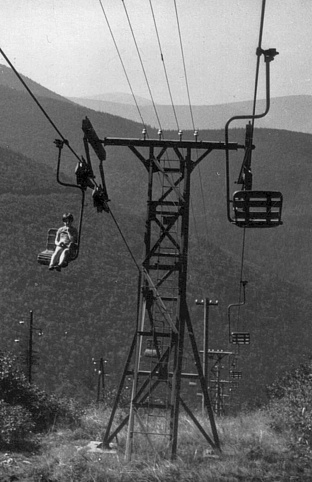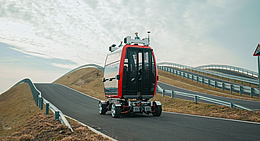Necessity is the mother of invention
With the annexation of the border areas of Czechoslovakia by the German Reich in autumn 1938 and the loss of Slovakia and the establishment of the Protectorate of Bohemia and Moravia in March 1939, Czechoslovakia – among other things – lost most of its mountainous areas. With the exception of the Petřín funicular in Prague, the Czechs thus also lost all their ropeways. Of the remaining mountains, only the Moravian-Silesian Beskids reached an altitude of 1,000 m. At that time the Czech mechanical engineering company František Wiesner of Chrudim already had experience with the construction of material ropeways as well as four aerial tramways in Czechoslovakia. The original plan for a tram to be built to serve one of the peaks in the Beskids was discarded due to the impending war and a cheaper solution sought that could be implemented quickly. In December 1939, the Czech Ski Association in Prague decided to commission the Wiesner company to design and build a chairlift leading from the district of Ráztoka in Trojanovice to the Pustevny mountain saddle at 1,020 m above sea-level.









![[Translate to English:] Foto: Leitner](/fileadmin/_processed_/a/8/csm_Vertragsunterzeichnung_Narvik_6_copyright_LEITNER_print_501f2d5c24.jpg)


![[Translate to English:] (c) Doppelmayr](/fileadmin/_processed_/b/3/csm_85-ATW_Stechelberg-Muerren_Lauterbrunnen_CHE_001_6442c0520d.jpg)







